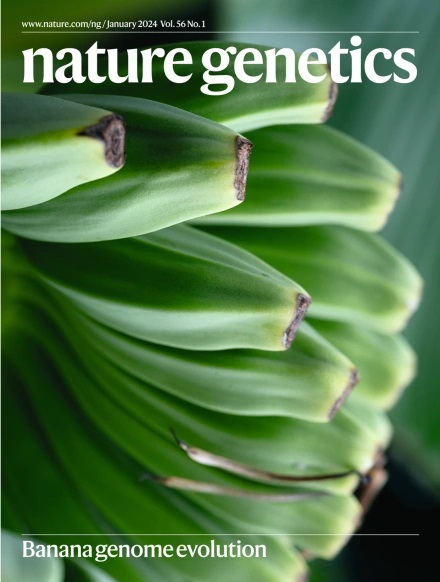Oryza genome evolution through a tetraploid lens
IF 31.7
1区 生物学
Q1 GENETICS & HEREDITY
引用次数: 0
Abstract
Oryza is a remarkable genus comprising 27 species and 11 genome types, with ~3.4-fold genome size variation, that possesses a virtually untapped reservoir of genes that can be used for crop improvement and neodomestication. Here we present 11 chromosome-level assemblies (nine tetraploid, two diploid) in the context of ~15 million years of evolution and show that the core Oryza (sub)genome is only ~200 Mb and largely syntenic, whereas the remaining nuclear fractions (~80–600 Mb) are intermingled, plastic and rapidly evolving. For the halophyte Oryza coarctata, we found that despite detection of gene fractionation in the subgenomes, homoeologous genes were expressed at higher levels in one subgenome over the other in a mosaic form, demonstrating subgenome equivalence. The integration of these 11 new reference genomes with previously published genome datasets provides a nearly complete view of the consequences of evolution for genome diversification across the genus. Chromosome-level genome assemblies of nine tetraploid and two diploid wild Oryza species provide insights into genome evolution within the genus Oryza and the potential for crop improvement and neodomestication.


水稻基因组通过四倍体透镜进化
水稻是一个由27个物种和11个基因组类型组成的重要属,基因组大小变异约3.4倍,具有几乎未开发的基因库,可用于作物改良和新驯化。在此,我们在大约1500万年的进化背景下展示了11个染色体水平的组装(9个四倍体,2个二倍体),并表明核心Oryza(亚)基因组只有约200 Mb,并且大部分是共链的,而其余的核部分(约80-600 Mb)是混合的,塑性的和快速进化的。对于盐生植物Oryza coarctata,我们发现尽管在亚基因组中检测到基因分离,同源基因在一个亚基因组中以马赛克形式表达的水平高于另一个亚基因组,证明了亚基因组的等效性。这11个新的参考基因组与先前发表的基因组数据集的整合,为整个属的基因组多样化的进化后果提供了一个几乎完整的视图。
本文章由计算机程序翻译,如有差异,请以英文原文为准。
求助全文
约1分钟内获得全文
求助全文
来源期刊

Nature genetics
生物-遗传学
CiteScore
43.00
自引率
2.60%
发文量
241
审稿时长
3 months
期刊介绍:
Nature Genetics publishes the very highest quality research in genetics. It encompasses genetic and functional genomic studies on human and plant traits and on other model organisms. Current emphasis is on the genetic basis for common and complex diseases and on the functional mechanism, architecture and evolution of gene networks, studied by experimental perturbation.
Integrative genetic topics comprise, but are not limited to:
-Genes in the pathology of human disease
-Molecular analysis of simple and complex genetic traits
-Cancer genetics
-Agricultural genomics
-Developmental genetics
-Regulatory variation in gene expression
-Strategies and technologies for extracting function from genomic data
-Pharmacological genomics
-Genome evolution
 求助内容:
求助内容: 应助结果提醒方式:
应助结果提醒方式:


